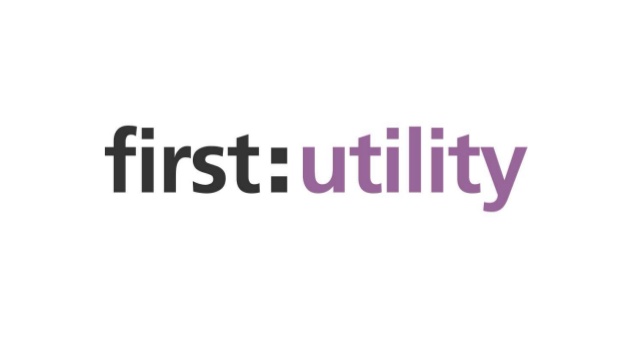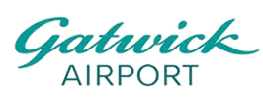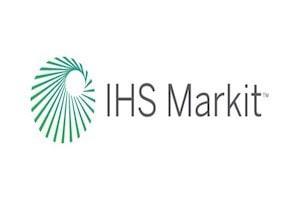What are the Biggest Problems and Operational Limitations of Wazuh?
Here at Sirius, we often get asked, "What are the biggest problems or risks associated with using Wazuh?". This is a very good question, and one that deserves a clear, honest answer. We understand that evaluators tend to worry more about what might go wrong than what will go right when making a strategic purchasing decision, often searching for potential problems or negative aspects of a product.
We want to be upfront: Wazuh is positioned as a comprehensive Open Source Extended Detection and Response (XDR) and Security Information and Event Management (SIEM) platform available at zero licensing cost, offering compelling features for security monitoring and compliance. However, equating the free license with a zero-cost or zero-risk operation is the greatest financial error in evaluating Open Source solutions. For many organizations, the platform’s open-source nature masks significant architectural, operational, and security limitations that shift the burden of platform maturity and scaling efficiency onto the end-user organization.
This article will explain these critical constraints and inherent trade-offs, helping you understand the full operational commitment required to deploy Wazuh effectively. We aim to be fiercely transparent, acknowledging that our offering might not be the best fit for every scenario, thus allowing you to make the most informed decision possible.
The Core Operational Trade-Off: The "Build-it-Yourself" Model
While Wazuh provides a flexible, powerful framework for SIEM and EDR functionalities, its implementation comes with significant architectural and operational trade-offs. Functionally, Wazuh acts more as a flexible SIEM and EDR framework requiring user-driven development rather than a mature, ready-to-use product.
This open-source framework necessitates continuous, specialized internal effort to be utilized as a robust security tool. The perceived financial savings derived from zero Open Source licensing are directly offset by the necessity of high human capital investment (staffing costs) for continuous development and content maintenance. The operational reality demands a dedicated security engineering team (or preferably a team) to possess the expertise and time to continuously create and maintain custom decoders, rules, and active responses that align with evolving threats.
This trade-off renders the platform potentially unsuitable for organizations that prefer to purchase security maturity and minimize operational development overhead.
Architectural Fragility and Scaling Limitations
The foundational architecture of Wazuh exhibits fundamental constraints in achieving the stability, reliability, and horizontal scalability expected in mission-critical Security Operations Center (SOC) environments. These limitations require complex external mitigation strategies.
1. Clustering, Load Balancing, and High-Availability Challenges
The core design complicates scenarios where redundancy and scalability are required.
Lack of Multi-Master Clustering: A significant architectural constraint is the platform’s inability to offer true multi-master clustering capability. This prevents the seamless, simultaneous management and processing of data across multiple nodes. Organizations must rely on complex, manual orchestration or third-party tools to achieve high-availability (HA).
External Load Balancing Requirement: The platform lacks a built-in load balancing mechanism. Consequently, organizations deploying Wazuh at scale must acquire, implement, and maintain separate external load-balancing solutions, such as dedicated proxies or hardware, directly contributing to overall operational cost and technical debt.
Poor Internal Monitoring: Proactive management is hampered by poor internal monitoring capabilities for both the cluster components and general services. This limited visibility inevitably increases the Mean Time To Detect (MTTD) and Mean Time To Respond (MTTR) when failures occur within the cluster.
2. Data Integrity and Operational Rigidity
Platform reliability is severely compromised by rigidity in log handling and change management.
Risk of Irrecoverable Log Loss: Wazuh is deficient regarding log retention reliability because agents maintain "no local persistence of logs" before transmission. If an agent experiences a network disruption or if the central manager node becomes unstable or crashes before indexing, the logs are at a high risk of being lost permanently. This inability to guarantee log completeness constitutes a major reliability flaw for security forensics, auditing, and regulatory compliance.
Required System Restarts: Reloading configuration settings, custom decoders, or updated rulesets mandates a full system restart. This rigidity impedes agile security operations, as minor, time-sensitive rule adjustments (e.g., during a critical incident) require a service interruption.
3. OpenSearch Indexer Dependency and Resource Consumption
The reliance on OpenSearch (or its predecessor, Elasticsearch) for data storage and retrieval introduces severe resource-intensive bottlenecks that fundamentally limit scaling potential.
Degrading Performance: As indexed environments expand, the OpenSearch deployment inherently becomes unstable, leading to sluggish indexing of large-scale data and significantly slower query speeds. This degradation undermines the efficacy of real-time threat detection.
Inflated TCO: The indexer component demands substantial compute resources (CPU and memory) to sustain acceptable performance when handling high volumes of security telemetry, leading to an inflated infrastructure footprint and associated Total Cost of Ownership (TCO).
Architectural Rigidity: Optimizing performance relies on a complex sharding strategy, but the optimal number of shards cannot be altered once the index is created without the costly and time-consuming process of re-indexing the entire dataset.
To address these scaling deficiencies for large-scale production environments, organizations are forced to adopt a Hybrid Architecture. This necessitates integrating and maintaining complex external components such as Kafka for stream processing, ClickHouse for efficient long-term storage, and Grafana for visualization.
Operational Overhead and Management Friction
Running Wazuh at scale introduces friction points that demand high levels of specialized technical expertise for administration and continuous content development.
1. Alerting Accuracy and Tuning Complexity
The platform generates high volumes of raw alerts and requires extensive, continuous refinement to be useful as an actionable security tool.
High False Positive Burden: The necessity for frequent, expert-level tuning to address false positives is a documented and common complaint among users. This places a heavy operational burden on the SOC team, diverting resources away from proactive threat hunting and timely incident response.
Complex Content Creation: Content creation complexity is evidenced by the difficulty in writing decoders and rules, requiring knowledge of complex syntax and adherence to strict procedures for preserving custom logic (as modifications to default rule files are overwritten during system upgrades). This elevates the necessary technical skill floor and increases reliance on high-cost security engineering specialists.
2. Agent Management and Security Gaps
The administrative capabilities for the agent fleet are noted as generally poor, creating systemic friction in large, dynamic environments.
Security Control Deficiency: A critical security deficiency exists because there is a lack of integrated authentication and authorization mechanisms governing agent installation and uninstallation. This lack of native, robust controls over the lifecycle poses a significant internal security risk, potentially allowing unauthorized parties to enroll malicious agents or disable legitimate security monitoring capabilities.
User-Space Agent Risk: The Wazuh agent runs in user space. While this avoids potential kernel-level crashes, it introduces a significant vulnerability: the agent is theoretically susceptible to being terminated or bypassed by sophisticated malware or any privileged user. Organizations must actively mitigate this architectural vulnerability, accepting an intrinsically higher risk profile at the agent level compared to commercial solutions that use kernel-level components.
Systemic Security Risks and Vulnerability History
Wazuh components have historically been affected by critical vulnerabilities, necessitating a cautious approach to deployment and mandating robust perimeter security.
1. Historical Critical Vulnerabilities
A review of historical Common Vulnerabilities and Exposures (CVEs) indicates recurring design flaws, particularly related to improper input validation and secure access control enforcement in the API and agent components.
Critical Remote Code Execution (RCE): The central management plane has been susceptible to high-severity remote compromise, such as CVE-2025-24016 (rated 9.9 Critical), involving an unsafe deserialization flaw in the DistributedAPI component. This permitted attackers with API access (including compromised agents) to execute arbitrary Python code remotely.
Local Privilege Escalation (LPE): The Windows agent has demonstrated susceptibility to local attacks, such as GHSA-pmr2-2r83-h3cv, due to improper Access Control Lists (ACLs) allowing local malicious users to gain NT AUTHORITY\SYSTEM privileges.
2. Platform Hardening Deficiencies
The platform exhibits fundamental weaknesses in internal security controls.
Alert Integrity Flaw: A particularly critical risk is the documented absence of integrity control for alerts. If an attacker compromises the system, they may be able to modify or suppress alerts and log data without triggering an internal integrity violation flag, undermining the core forensic value of the SIEM.
Structural Security Gaps: Documented deficiencies include the lack of configuration file permission checks and the absence of native self-auditing capabilities within the platform.
Conclusion and Strategic Recommendations
The Total Cost of Ownership analysis confirms that adopting Wazuh involves accepting the operational and architectural shortcomings of an Open Source framework. These limitations must be bridged by internal, dedicated engineering effort, not by the platform itself.
If you are considering Wazuh, it is critical to address these problems upfront:
- Factor in the High Expertise Cost: The platform is unsuitable for organizations lacking significant internal technical resources. You must staff dedicated, expert security engineering teams capable of managing complex distributed systems, performing continuous content development (custom rules, decoders, and active responses), and executing meticulous security hardening. The median annual expenditure observed in commercial engagements ($16,234) serves as a baseline expectation for professional-grade operations.
- Plan for Hybrid Architecture: For any environment anticipating high-volume log ingestion, the default Wazuh + OpenSearch stack is architecturally insufficient due to resource consumption and query speed degradation. Budget and plan immediately for a sophisticated hybrid architecture utilizing external components like Kafka and ClickHouse to achieve true enterprise scale and long-term retention.
- Implement Robust Security Measures: Given the platform’s history of critical RCE vulnerabilities, all central components must be isolated using stringent network segmentation. Access to the Wazuh API must be heavily restricted and protected by layers of authentication.
- Evaluate Against Commercial Maturity: Organizations whose primary goals are minimizing operational overhead, achieving rapid time-to-value, and leveraging advanced detection techniques (like integrated AI/ML correlation or kernel-level protection) should strongly consider commercial XDR or SIEM solutions. In these cases, the cost is primarily financial, whereas Wazuh requires the acceptance of significant architectural instability and continuous development as a core operational function.
















































